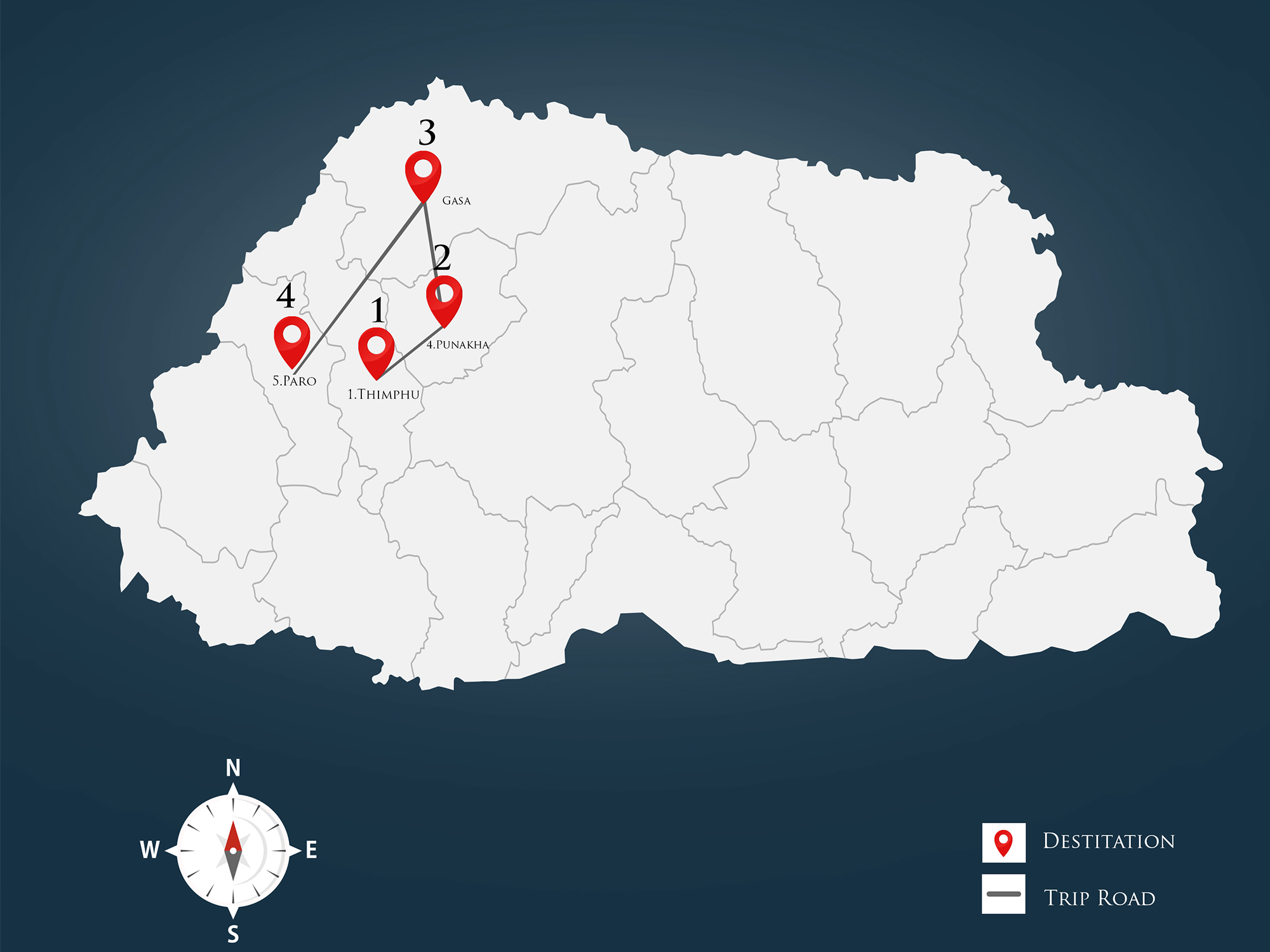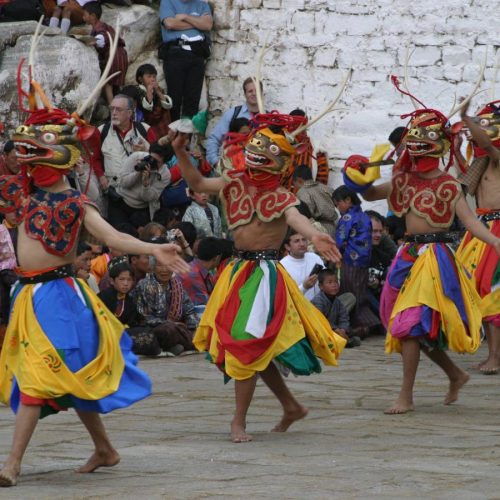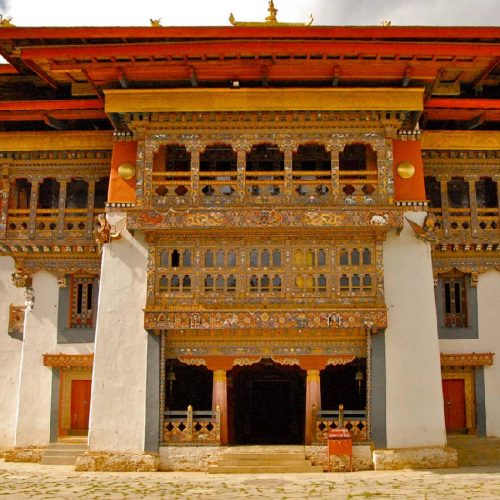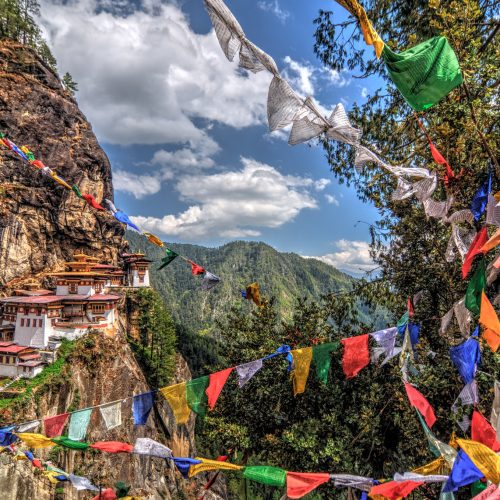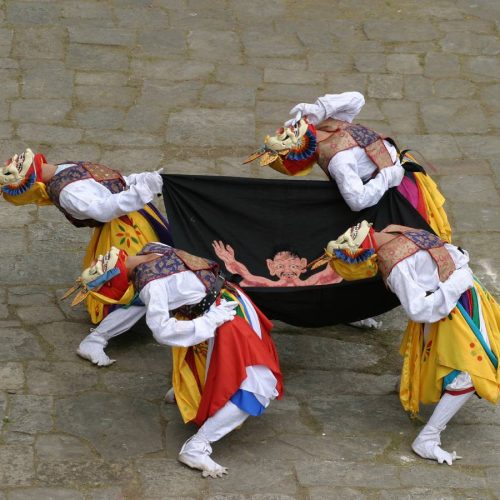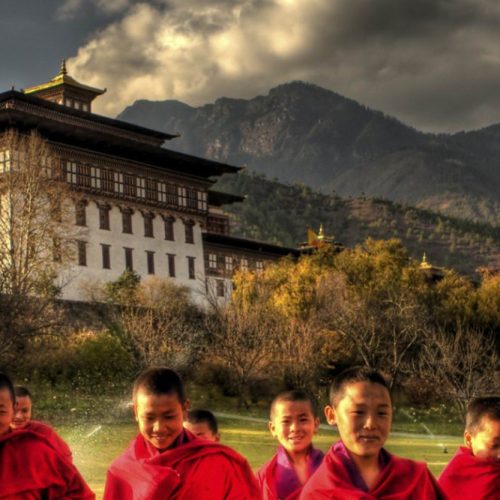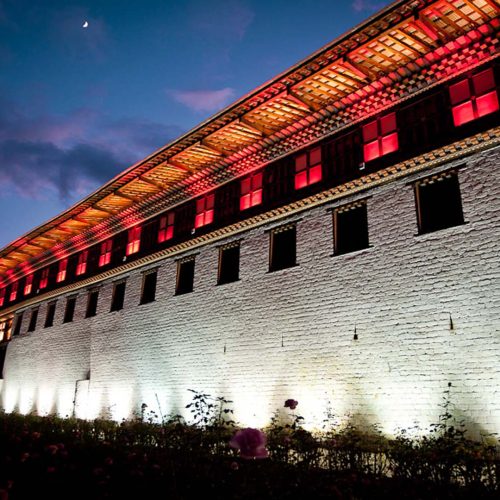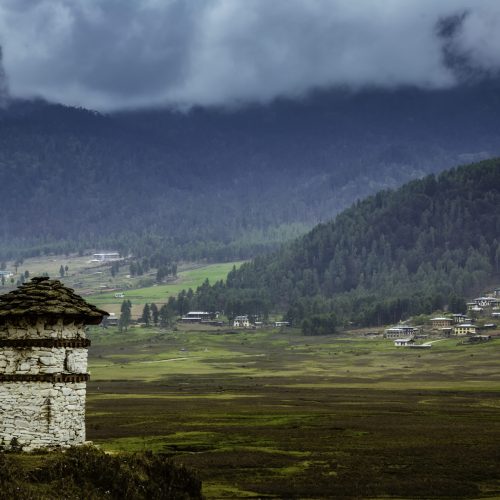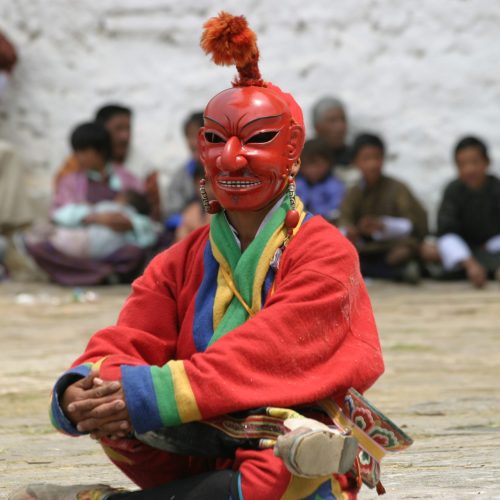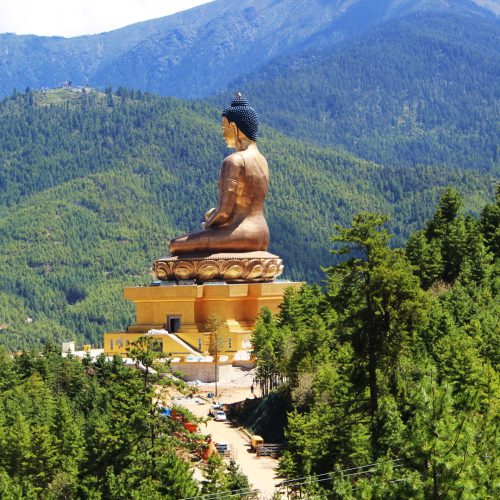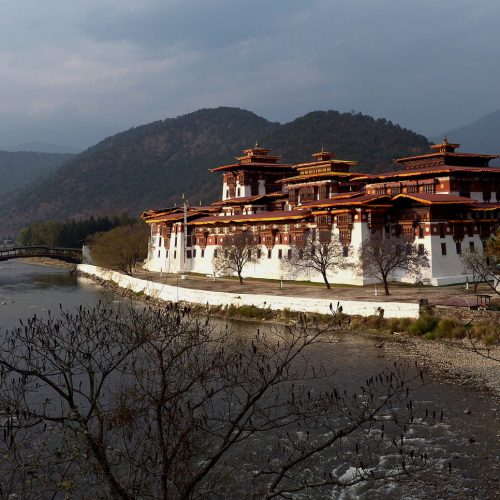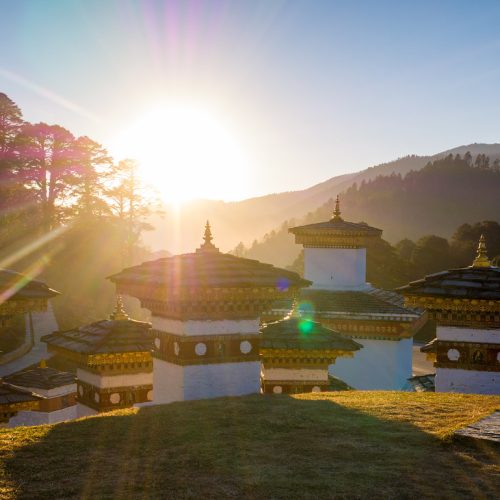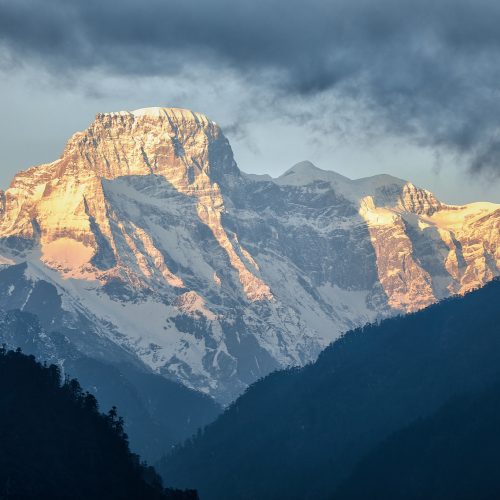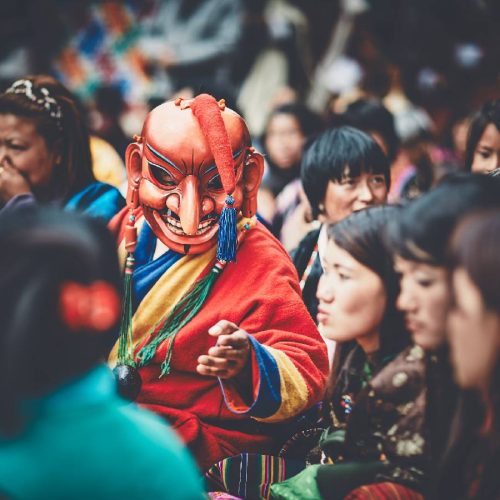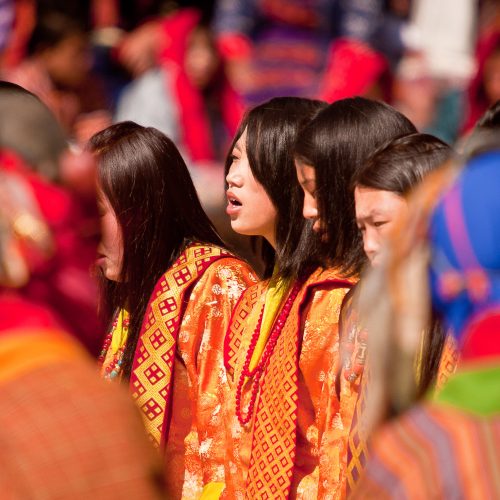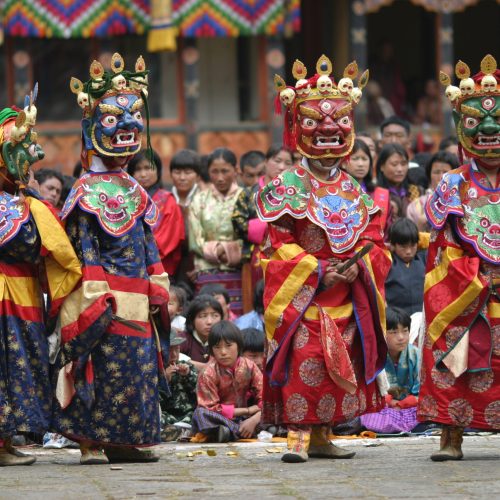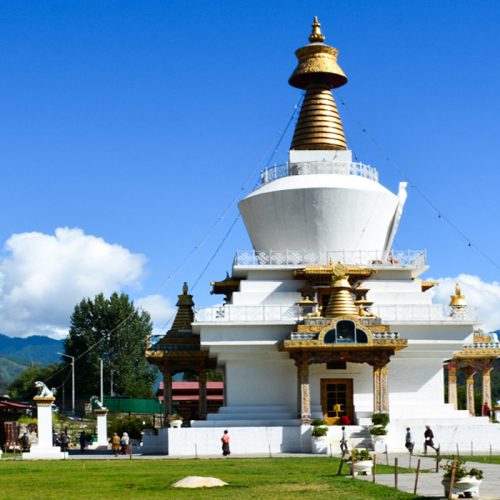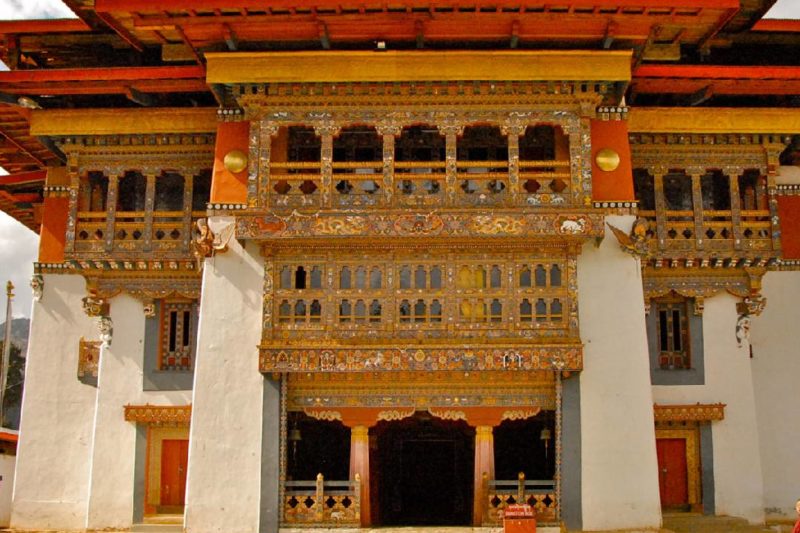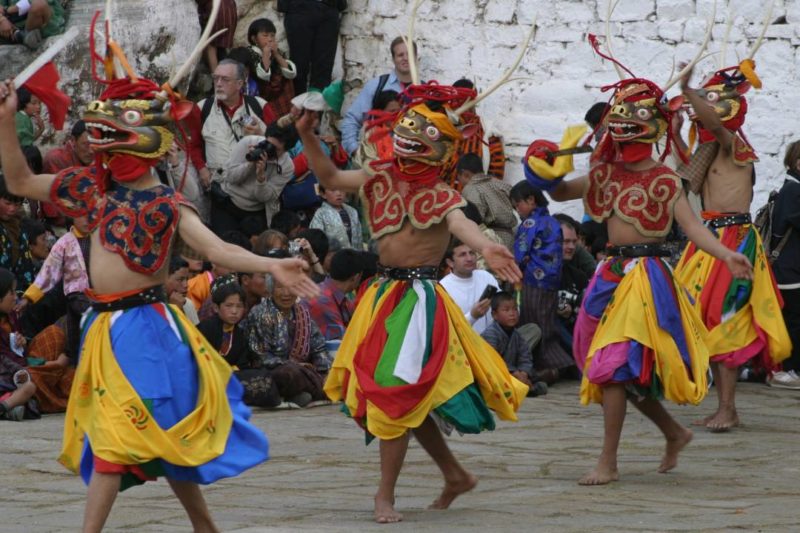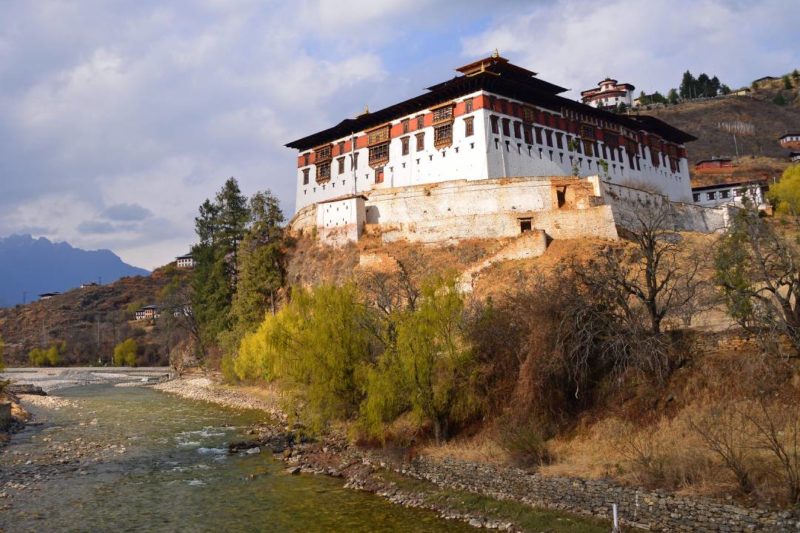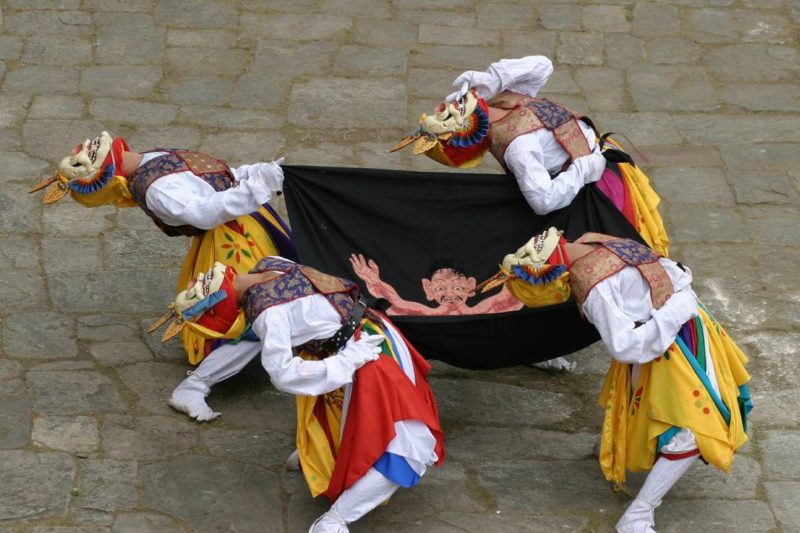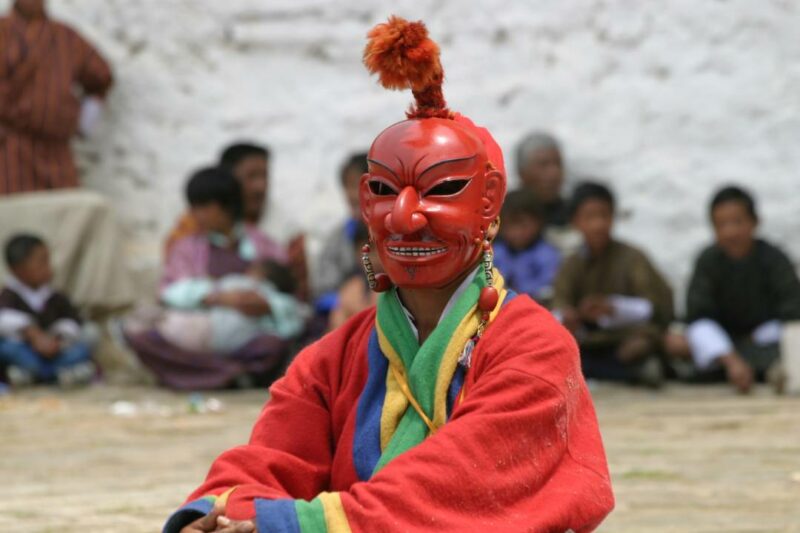First held in 2016, the Royal Highlander festival’s goal is to spread awareness about the beauty and wonders of Gasa district – its pristine nature, history, and venerable tradition and to introduce Gasa’s vision of “Good to Great Gasa”. Beyond that, it is to share with guests about the beauty right in the simple life of the Highlanders.
The Royal Highlander Festival is held at an incredible altitude of 4,000m in Laya, Gasa. This unique festival brings new air to this remote region of Bhutan.
At an altitude of 3,800m, Laya is certainly not an easy destination, but all the effort will be worth it once you have touched its ground. In October, when the Royal Highlander Festival is held, the weather can be quite cold, from 1-12 °C (33,8°F to 53,6°F). The temperature may drop below 0°C (32°F), with light drizzles or snow. Due to the significant weather conditions, the hike to Laya is most suitable for experienced trekkers. *An option is also to fly via helicopter to the festival. * Highlights in this tour includes Punakha Dzong, “Palace of Great Happiness” and Paro Rinpung Dzong, “Fortress of The Heap of Jewels” finest examples of Bhutan’s unique architecture. An unforgettable experience and hike to Taktsang- The Tiger’s Nest. Explore the vibrant atmosphere and daily hustle and bustle of Thimphu and Paro town while also experiencing spectacular views of the Himalayan range, its snowy peaks and the lush green forests Bhutan has to offer.
Altitude in Paro: 2,280m
Onboard the aircraft, the flight is treated to spectacular views of snow peaked mountains and the Himalayan ranges. Paro airport (2,280m) is Bhutan’s only international airport where our dedicated team will receive you at the airport.
Paro Rinpung Dzong (Fortress of The Heap of Jewels)- Rinpung Dzong is an ancient fortress in traditional Bhutanese architecture with a complex of courtyards, temples, administration offices and open space surrounded by towering walls. All the buildings are equipped with huge windows with elaborate wooden carvings of traditional Bhutanese motifs. Paro Dzong is considered one of the finest examples of Bhutanese architecture and it’s one of the top tourist attractions in Bhutan. This impressive dzong is also seen during landing into Paro Airport.
National Museum of Bhutan – Ta Dzong. Originally built as a watchtower in 1649, atop a hill above the Rinpung Dzong, overlooking the whole picturesque Paro valley. Converted into a museum in 1968, its extensive collection includes astonishing antique thangka paintings, weapons and armor, and rich diversity of natural and historic artifacts.
Altitude in Paro: 2,280m
Taktsang Monastery, or the Tiger’s Nest (highest altitude: 3,120m)- A 4.5 km hike that will typically take 5-6 hours ascending around 600m to reach the destination. An experience through dense enchanted forests and spectacular mountain scenery along the trail.
Traditional meal at a farmhouse learning about Bhutanese daily life. A traditional hot stone bath at the farmhouse after all the hiking is also an option provided for relaxation.
A stroll through Paro town.
Altitude in Punakha: 1,300m
Distance: 125 km
Estimated travel time: 4.5 hours
Dochula Pass (3,050m)- Panoramic view of the Himalayan mountains. The pass is a popular location among tourists as it offers a stunning 360 degree panoramic view of the Himalayan mountain range. The view is especially scenic on clear, winter days with snowcapped mountains forming a majestic backdrop to the tranquility of the 108 chortens gracing the mountain pass.
Punakha Dzong (Palace of Great Happiness)- Built-in 1637, it is said to be the most spectacular dzong in Bhutan. Punakha Dzong was built at the confluence of two major rivers in Bhutan, the Pho Chhu and Mo Chhu, which converge in this valley.
In addition to its structural beauty, until the mid-1950s, it still served as Bhutan’s capital and the seat of the government. All of Bhutan’s kings have been crowned here, and it has witnessed the memorable wedding of the King of Bhutan, Jigme Khesar Namgyel Wangchuck to Jetsun Pema in 2011.
Pho Chhu Suspension Bridge- Measuring at 160m in length, this is Bhutan’s longest suspension bridge. Spectacular sight of Punakha Dzong and Pho Chhu Valley.
Khamsum Yulley Namgyal Chorten (1,500m)- A leisure 1 hour hike to witness Bhutan’s finest example of tradition and architecture. A unique attribute of this Chorten setting it apart from the rest is in its architecture- designed on the principals delineate within the Holy Scriptures instead of trendy engineering manuals. The golden spire and labyrinthine wall patterns square measure fine example of art and traditions.
Distance Punakha – Gasa: 70km
Distance Gasa – Konia: 14km
Estimated time: 6-7hrs
Camp altitude: 2,240m
Ascent 1,5000m, descent 740m
Trek to Konia- Taking approximately 4 hours crossing Bari La pass (3,740m) then gradually descend toward Konia. Camp site at Konia.
*Another option is to fly via helicopter to Gasa. *
Distance: 19km
Estimated time: 6-7hrs
Camp altitude: 3,050m
Ascent 1,070m, descent 260m
Trek to Kohi Lapcha pass at an altitude of 3,300m. Hiking along the Mo Chhu river valley, experiencing incredible view of the raging river, feeder stream, and beautiful waterfalls. Ascend to campsite at Laya.
First held in 2016, the Royal Highlander festival’s goal is to spread awareness about the beauty and wonders of Gasa district – its pristine nature, history, and venerable tradition and to introduce Gasa’s vision of “Good to Great Gasa”. Beyond that, it is to share with guests about the beauty right in the simple life of the Highlanders.
There are a variety of and events which take place during the festival. A chance to witness the traditional offering of Buelwa (gift offering) with Auley (traditional epic poem/song recitation tradition originated from Zhabdrung Rinpoche days). This ritual showcases the loyalty and respect of the Laya community for the dynamic and visionary leadership of their monarchs.
Variety of cultural programs will be performed by Layaps. Competition such as traditional songs and dances and other various competitions on highland animals including the Yaks, horses and Mastiffs will be held.
Cultural programs performed by the Layaps range from traditional songs and dances to competitions on highland animals such as the Yaks, horse, and Mastiffs. There will be plenty more performances to be experienced at the festival.
An option to experience day 2 of the festival or alternatively to explore Laya village and meeting the locals. A unique experience to learn first-hand about the life of a highlander.
Exploring the lakes in the area- Kharkhil Tsho, Paro Tsho, and Onemo Tsho. A true feeling of tranquility with the lush meadows surrounding the crystal-clear water lakes.
Hot springs- Exerpeince the natural hot springs in Lungo village.
Distance: 19km
Estimated time: 6-7hrs
Camp altitude: 3,050m
Ascent 260m, descent 1,070m
Camp at Kohi Lapcha- camp near Koina Chhu.
Distance: 14km
Estimated time: 6-7hrs
Camp altitude: 2,240m
Ascent 740m, descent 1,500m
The trek continues through Bari La pass at 3,740m before arriving in Gasa.
Gasa Tsechu (hot springs)- One of the most famous hot springs in Bhutan and a chance to rejuvenate your body with mineral water after a whole day of trekking. The campsite is located close to Gasa Dzong.
Gasa Dzong- Erected in 1646 by Zhabdrung. It is dedicated to commemorate the victories over the Tibetans and also guarded the region against invasions in the 17th and 18th centuries. The locals call it the Tashi Thongmon Dzong, named after the region’s protecting deity Tashi Thongmon. The dzong has a unique structure with a circular shape and three watchtowers standing at strategic points. On clearer days, the sight of Gasa Dzong with the backdrop of the mighty Mount Gangboom is a magnificent sight.
Altitude in Thimphu: 2,320m
Distance: 145 km
Estimated travel time: 6hrs
Chimi Lhakhang- Hike to the Temple of Fertility (altitude: 1,500m). An enjoyable hike, taking about 30 minutes through the rice and mustard fields and the uniquely decorated houses of Lobasa Village.
Altitude in Paro: 2,280m
National Memorial Chorten – one of Bhutan’s most prominent buildings. The Chorten is the monument of world peace and prosperity. For Bhutanese, the site also serves as the memorial to their Third King, His Majesty Jigme Dorji Wangchuck (1928-72).
Changangkha Lhakhang- This traditional Bhutanese temple perched like a fortress on a ridge above central Thimphu hums with pilgrim activity. It was established in the 12th century on a site chosen by Lama Phajo Drukgom Shigpo, originally from Ralung in Tibet. A chance to give the resident astrologer your birth date and he will consult divination charts to decide what kind of protective prayer flags will benefit you. Observe the shrine to the tshomen (mermaid) in the central courtyard and the excellent view from the kora (circumambulation) path around the compound.
Buddha Point (Buddha Dordenma) - At a height of 51,5m, placed on top of a hill in Kuenselphodrang Nature Park, the sight of the enormous statue of Shakyamuni Buddha is stunning and unforgettable. This giant statue is one of the largest in the world and is said to emanate an aura of peace and happiness.
General Post Office - The office is loved by travelers since you can make your own stamp – the unique Bhutanese souvenir to send to your family and friends.

